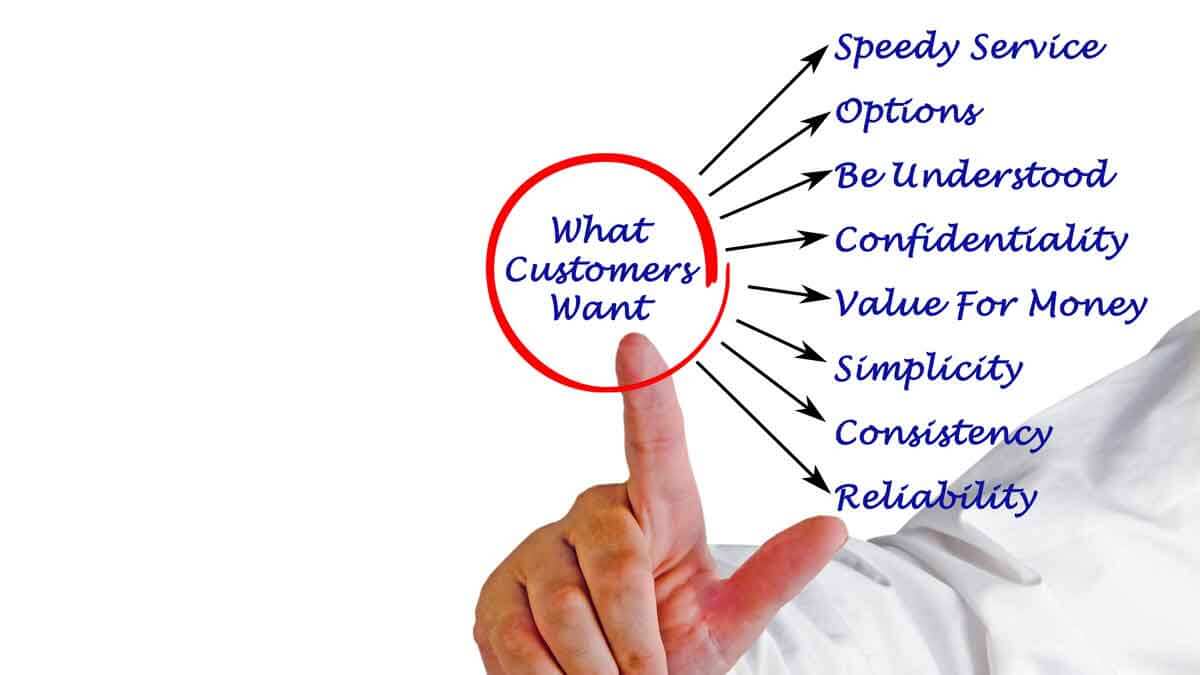You can ask for pricing decisions using a survey, e.g. Van Westendorp. But it’s hard to get a straight answer in concentrated B2B markets: They know they’ll be negotiating prices later. Better to understand the customer’s world so well you can create a value calculator… to model their pricing decision-making. You’ll have longer-lasting insights vs. a one-time survey.
More in article, Pricing New vs. Existing Products (Originally published in B2B Organic Growth Newsletter).
The cathedral-builder has counted the cost in years and is willing to pay it to create something of enduring value. He recruits and apprentices the finest stone masons and wood carvers he can find. Because these craftsmen know the passion of the builder, they are secure in their employment, and they work with pride. Do you have such builders?
More in article, Are You a Builder or a Decorator?
If you were gathering customer insights about belts, would you rather interview someone using a belt to convey iron ore… or to hold up their pants? B2B customers can usually provide more insight than end-consumers due to greater knowledge, interest, objectivity and foresight. But these advantages are no advantage unless you use a B2B-optimized approach.
More in white paper, Catch the Innovation Wave (page 6).
An alarm sounds in their heads and they move into “negotiating” mode… so good luck getting a straight answer. But they do want you to understand their needs. So collect economic data during interviews and tours for value-calculator price modeling later. This is why it’s easier to set proper pricing for a new product than an existing one.
More in article, Getting Top Price for Your New Product (Originally published in B2B Organic Growth Newsletter).
Unlike many B2C benefits, e.g. amusement, comfort, and self-esteem, B2B customer benefits are usually measurable, economic and—wait for it now—predictable. This predictability means B2B suppliers who study customer outcomes, like a science, will be handsomely rewarded. B2B customers will eagerly help you… if you know how to ask them.
More in article, The Science behind Great Value Propositions (Originally published in B2B Organic Growth Newsletter).
Of course, employees will be laughing; they’ve heard this one before. When satisfying the expectations of Wall Street analysts conflicts with building the firm’s long-term competitive strength, guess which usually wins? Any employee who’s been through travel restrictions, investment delays, hiring freezes, etc. knows the answer.
More in article, Why Maximizing Shareholder Value is a Flawed Goal (Originally published in B2B Organic Growth Newsletter).
Many companies think they have learned about customer needs when they visit customers to validate their hypothesis or potential solution. They have not. They have learned about market reaction. To a single idea. Their idea. On top of this, it’s likely this customer reaction was distorted by confirmation bias.
More in white paper, Timing is Everything (page 15).
Some executives expect employees to deliver innovation-driven growth without investing in company-wide tools and skills. Either nothing changes, or employees run off changing things in random (Brownian) directions. Be intentional about what new behavior is needed, and take unwavering steps to drive it.
More in article, 3 Problems with Innovation Metrics (Originally published in B2B Organic Growth Newsletter).
Initially, you are aware of the first three, but completely unaware of the fourth—surprises. When you begin your project, list the first three, and try to convert A’s and Q’s into F’s. Then uncover the surprises through customer interviews, tours and observation. Seek to understand the first three, and discover the last one.
More in white paper, Innovating in Unfamiliar Markets (pages 12-13).
Some leaders are Interior Decorators, trying to make the place look good every quarter… but not building anything. Others are Realtors. Their hearts are in buying and selling… reaping reward when the work of others’ hands changes hands. Others are Landlords, who apply themselves at work, but their hearts are elsewhere. Be a Builder if this is within you.
More in article, Are You a Builder or a Decorator?
You shift resources “up” by investing manpower earlier in understanding market needs. This lets you be more successful later in developing solutions. You shift resources “out” when employees spend less time talking to each other… and more time directly engaging customers, through interviews and tours. Develop new skills for this, and create a new company culture.
More in white paper, Catch the Innovation Wave (page 6).
Your sales force should play a key role in innovation-focused interviews. But not by themselves. Unaccompanied sales reps seldom attract all the right customer contacts, and they’re not rewarded for the long time horizons required. Besides, market-facing innovation requires central coordination, since a single sales territory won’t contain all the needed prospects.
More in article, Why Your Sales Force Can’t Hear the Customer’s Voice (Originally published in B2B Organic Growth Newsletter).
If the customer felt they helped you with your interview, you probably wasted your airfare. But if they felt it was their interview, asked for a copy of the notes, and said you were a good meeting facilitator… you probably learned things your competitors don’t know. B2B insight skills are needed for this. Do your people have them?
More in e-book, Reinventing VOC for B2B (page 9).
Research shows customer engagement is critical to successful innovation. This engagement increases as you move through six “insight levels”: 1) Deciding what customers want in your conference rooms, 2) polling your sales force, 3) conducting customer surveys, 4) qualitative VOC, 5) quantitative VOC, and 6) B2B-optimized VOC. Where are you?
More in article, Boosting Innovation…In One Easy Lesson (Originally published in B2B Organic Growth Newsletter).













